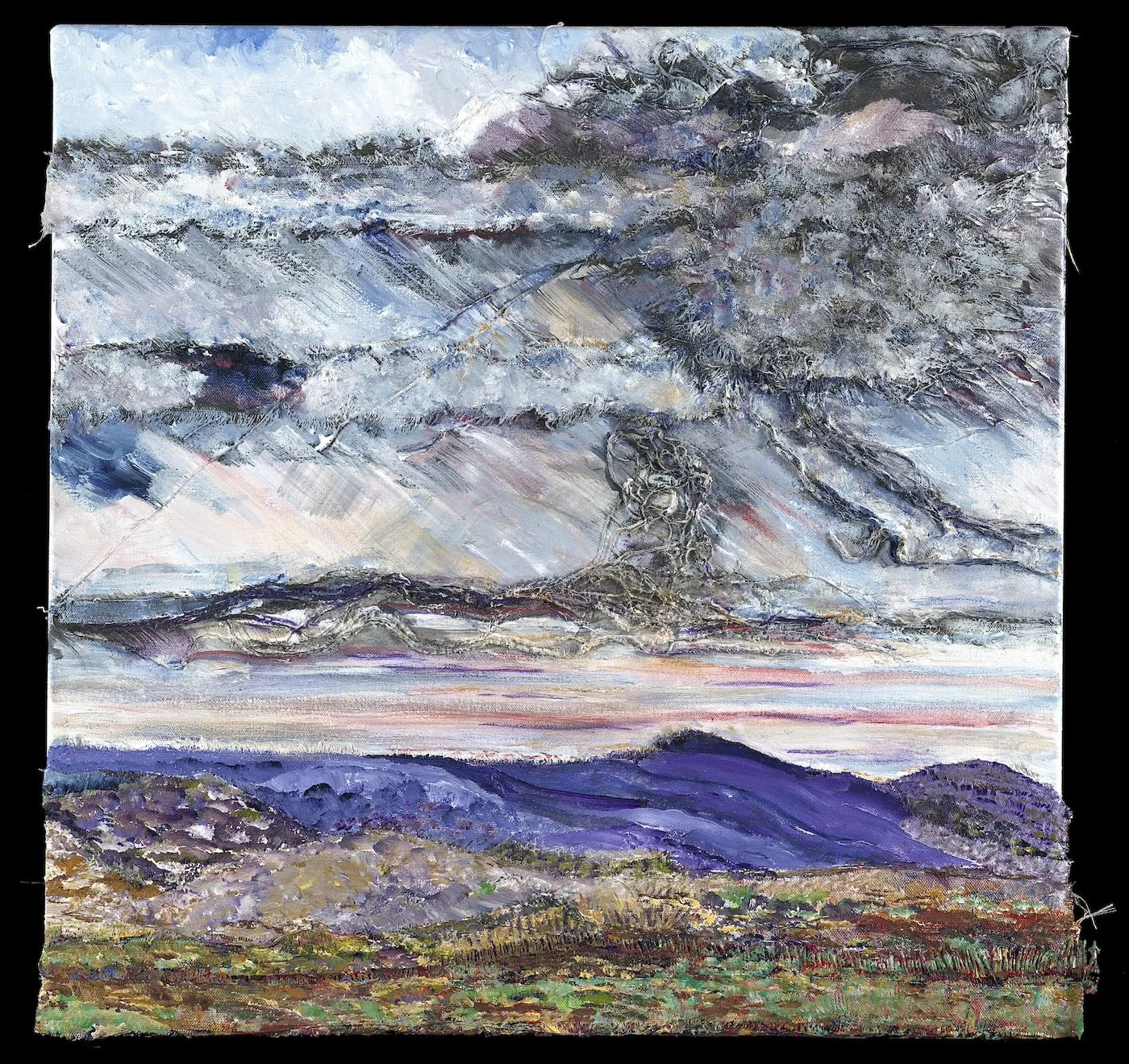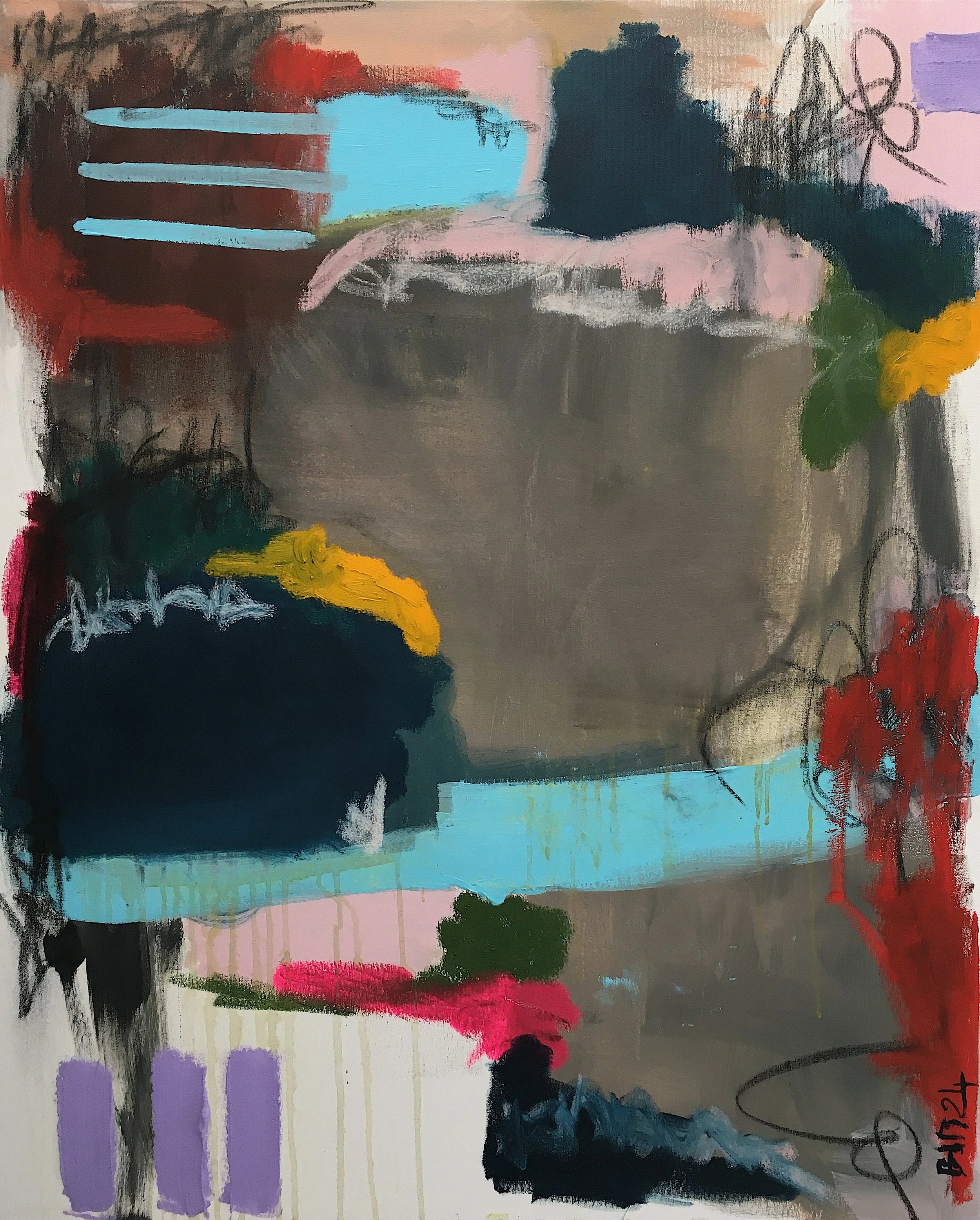Interview with L. Scooter Morris
We the people, have found ourselves at this defining moment, with the grand desire to change the course of our future deciding to be more than we are at present, more than we have been, and challenge the best of ourselves to become something we have only hoped possible.
As one of the many, I use my vision as an artist in an effort to reveal social injustice and suggest a possible alternative by inspiring others to use their voice.
The named style of my work is called, “Sculpted Paintings”. The paintings are an integration of color, light and texture. They are the collaboration, after many years, of combining materials and concept, ideas and technique and finding the subtle flow of message and medium. The fleshed out nuances becoming a living piece of art as a three dimensional image on the two dimentional plane.
In describing your work as sculpted paintings that seduce viewers into exploring new ideas, you touch on a form of sensory deception or illusion. Could you elaborate on how this approach not only challenges but enhances the viewer's perception of reality? How do you balance the tension between illusion and the 'thread of something real' in your work?
My work, which is called, Sculpted Paintings, is the integration of color, light and texture with many surface variations and includes, mixed media.
I use paint and materials to create the illusion that something exists that the viewer perceives, suggested by my images but goes beyond the image. By choosing iconic images such as a flag, a heart, stars, and abstract landscapes it creates something real and the use of texture, colors and sculpted materials create the illusion that frees the viewer to explore more profound perceptions.
Your process involves capturing the essence of a moment—how do you decide which elements of that moment are crucial to convey in your artwork? Is there a particular experience or piece that you found particularly challenging to encapsulate, and how did you overcome that challenge?
You begin the work, the work evolves, and in that evolutionally process a story begins to take shape. This story has a life of its own and begins to write itself. The magical “moment” is the spark that comes spontaneously to the artist. This is often expressed when a person says, “the light bulb went on”.
Moving to New Mexico notably influenced your art style and led to the evolution of your unique sculpted paintings. How do environmental and cultural contexts shape the methods and materials you choose? Do you believe an artist's surroundings are reflected implicitly or explicitly in their work?
Sculpted Paintings were initially conceived while I was an art student at Tyler School of Art in Philadelphia. After moving to New Mexico this style was enhanced and influenced in a profound way. And of course, New Mexico affected both my color palette and my content. New Mexico and Santa Fe have long attracted and influenced both writers and artists. By way of example Georgia O’Keeffe’s paintings changed dramatically when she left New York and the East for New Mexico. Being surrounded daily by great distances and vistas as well as the rich colors of the high desert you find these influences seeping into your perceptions and your very being.
You aim to create artwork that is not only beautiful but also timeless and resonant. How do you navigate the pressures of contemporary art trends while maintaining a vision that transcends the present moment? What do you think makes an artwork timeless?
I work very hard to not notice or be influenced by contemporary art trends. By doing this I increase the possibility of creating a timeless work of art. I work with iconic images such as the flag series, the heart series, as well as the use of stars and abstract landscapes. When all of this is combined with my Sculpted Paintings a sense of timelessness can often occur.
5.You mention that the combined meanings from both the artist and the viewer elevate the work. Can you discuss a specific instance where audience interpretation of your work significantly differed from your intention? How does this dynamic impact the way you approach new projects?
In general, I try not to have a perceived interpretation when I create the work. By way of example the sculpted painting “The United Sates of Gun” first appeared on Times Square and was pickup nationally and internationally. It has a universal message in that both pro-gun and anti-gun as viewers felt the painting spoke to them.
Your work, like the United States of Gun, utilizes potent symbols such as the American flag and firearms to comment on societal issues. What responsibilities do you feel as an artist when tackling such divisive themes? How do you ensure your message is communicated effectively without alienating viewers?
My goal in taking on divisive themes it to create a dialogue in the hopes differing views can find common ground. This is my way as an artist of attempting to help create a visual dialogue and perhaps help our country unite.
You have a specific preference for materials that allow you control and flexibility, such as acrylic on varied textures. How do these material choices facilitate the expression of complex subjects? Could you provide an example of how a particular material influenced the outcome of a piece?
As an artist I select the best and necessary materials that would suit each painting.
Having had your artwork displayed on a digital platform like the Times Square billboard, what challenges did you face in translating your sculpted paintings into a format meant for digital consumption? Conversely, what unexpected rewards might have emerged from this experience?
To emphasis the sculpted qualities in a digital format it is necessary to create and use very high-resolution photographs. The advantage of the digital format is that it can reach a wide audience of viewers both nationally and internationally.
You seek to 'make it real through beauty'—a deeply philosophical pursuit. How do you reconcile the subjective nature of beauty with the objective pursuit of truth in your artwork? Do you believe that art has the power to reveal universal truths through personal expressions of beauty?
Yes, I do believe that Art has the power to reveal universal truths through beauty, Many feel that both beauty and truth have a subjective component, so I do not believe a conflict exists. There is a famous quote that reflects my belief, “Beauty is truth, truth beauty that is all ye know on earth and all ye need to know”. John Keats
As your art continues to evolve, what new themes or techniques are you eager to explore in the coming years? How do you see your work responding to future cultural or societal shifts, and what legacy do you hope to leave with your sculpted paintings?
“I believe like most artists do, that my future work will organically evolve out of my current work. If I were to be remembered I would like it to be as an artist who tried to use her art for the
benefit of all. I expressed this in my painting titled “We Are The Many”. On the flag I wrote:
“We the people, are the many, bound by love of country, hardened by the struggle,
softened by the love, made determined by the need,
and resolved to make our place in these United States.
We the people are called upon as one of the many to join together with others
though we are of different faiths, and color and gender, we must find ourselves
joined as one of the many, part of the whole, working together with
tolerance, wisdom and hope to make our shared differences work for a united
purpose.”

















